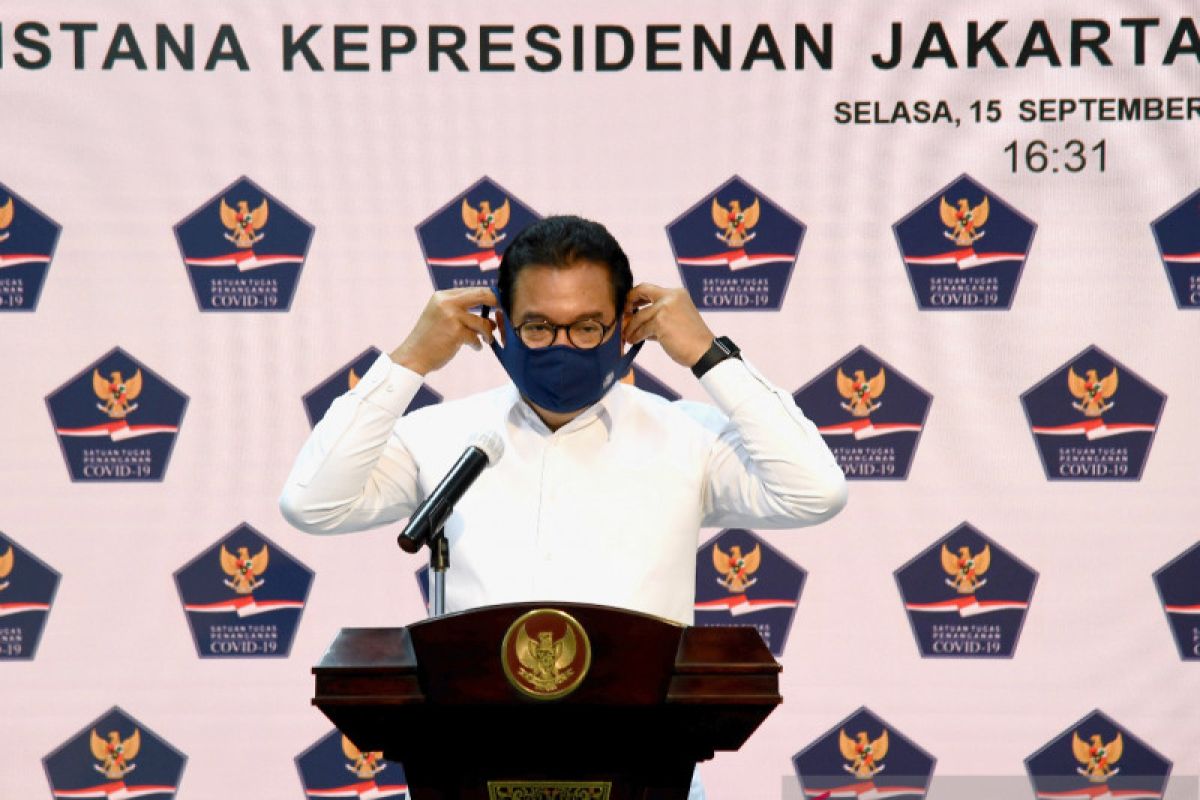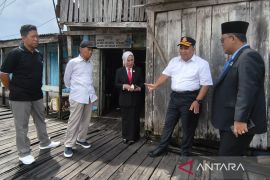Jakarta (ANTARA) - A screenshot of spokesperson for the national COVID-19 task force, Wiku Adisasmito, during a discussion at the BNPB building on September 4, 2020. (ANTARA/Prisca Triferna)
“It is good news that the number of districts and cities classified as red zones has fallen from 70 to 41,” Spokesperson for the National COVID-19 Task Force Wiku Adisasmito said in an online press conference at the Presidential Palace here on Tuesday.
With the decline in COVID-19 transmission risk, 34 districts and cities which were earlier categorized as red zones have been designated as orange zones, or areas with a moderate risk of COVID-19 transmission, he informed.
As a result, the number of districts and cities classified as orange zones this week has increased to 293 from 267 earlier, he said.
The increase in the number of orange zones also points to a rising risk of COVID-19 transmission in areas that were earlier classified as green zones, or areas with zero risk of coronavirus transmission, he said.
"The orange zones should really pay attention to the control of (COVID-19) cases and implement health protocols so that they will change into light (green) zones and no longer witness new cases," he said.
The task force has also recorded an increase in the number of yellow zones, or areas with a low risk of COVID-19 transmission, while the number of green zones, or areas without new cases, has declined.
"The number of green zones has declined to 22 from 25. We hope the 22 districts and cities would seriously implement health protocols," Adisasmito said.
Indonesia has recorded 225,030 COVID-19 cases as of Tuesday (September 15, 2020), with 161,060 patients recovering from the disease and 8,965 others succumbing to it.
Related news: Indonesia fast tracks COVID-19 vaccine development
Related news: COVID-19: Bekasi private hospitals run short of isolation rooms










